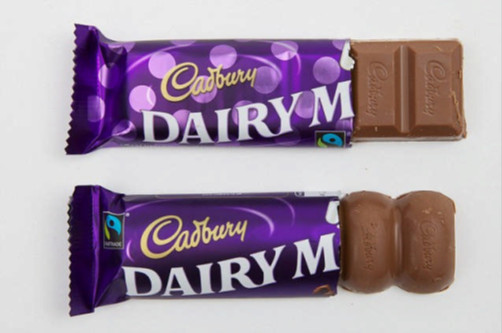
Eating with our ears
The sounds that we hear before tasting a piece of food is said to influence our sensory expectation of how that piece of food will taste.
This sounds a bit ridiculous, as surely we detect the flavor of something on our tongue when we actually eat it, hearing a sound just before is not going to alter the way our taste buds work?
But apparently it does and the research published in Flavour looked into exactly that – how does the way we hear our food alter how we taste it? Although the article itself focuses on the sounds of fizzy drinks, the same could be applied to chocolate…
Sensory marketing
Many companies play up to this in their ads, a phenomenon known as ‘sensory marketing’.
Many companies play up to this in their ads, a phenomenon known as ‘sensory marketing’. Think back to a time when you saw a chocolate advert on the TV. Chances are it included a moment where the chocolate is snapped; breaking the chocolate bar perfectly along the rigid lines, or the slow, sensual unwrapping of the packaging prior to consumption.
Even the sounds created during the eating process, a quick snap and crunch, or teeth chomping down – affect our perception of how that chocolate is going to taste – and what we can expect from it as a product.
It would be no surprise if the specific sound recorded took multiple shots before finding the most perfect one. Rumor has it that a sound engineer was used to emphasize the now iconic cracking sound as a model bit into the chocolate coating of a Magnum ice cream on their advert.
Research concludes that there is a great opportunity for distinguishing branded food and drink items from each other by sound in advertisements, particularly as the sounds made contribute to what people think of the product itself.
It’s even possible now for a ‘smart necklace’ to count the calories of the food you eat, by listening to the sounds you make while eating it. This high-tech necklace, developed by researchers at Northeastern University in China, hears the unique sounds of different foods while you chew them and catalogues the number of calories consumed. Crazy! Although I’m pretty sure none of us would want to keep track of the number of chocolate calories passing our lips this weekend!
Round and sweet
Other work has looked at different senses for the taste of chocolate. An opinion article, also published in Flavour, discusses how, back in 2013, Cadbury’s customers were angered by the change in shape of their Dairy Milk chocolate bars from a sharp rectangle to a curvy bubble – playing to our visual senses.

Many complained that the chocolate ‘tasted sweeter’ than usual, however it was claimed that the ingredients were exactly the same. It’s been found previously that sweetness is commonly associated with roundness and angularity with bitterness – possibly explaining this change in perception.
So it’s true, the shape – and sound – of the chocolate we eat can impact upon flavor. Perhaps pointy, angular Easter eggs just wouldn’t be the same!
Sophie Marchant
Latest posts by Sophie Marchant (see all)
- Happy Easter! Enjoy the sound (and taste) of your chocolate! - 23rd March 2016
- Quiz: Aiming to make rare diseases common knowledge - 29th February 2016
- Quiz: The big end of year On Biology bumper quiz - 23rd December 2015
Comments